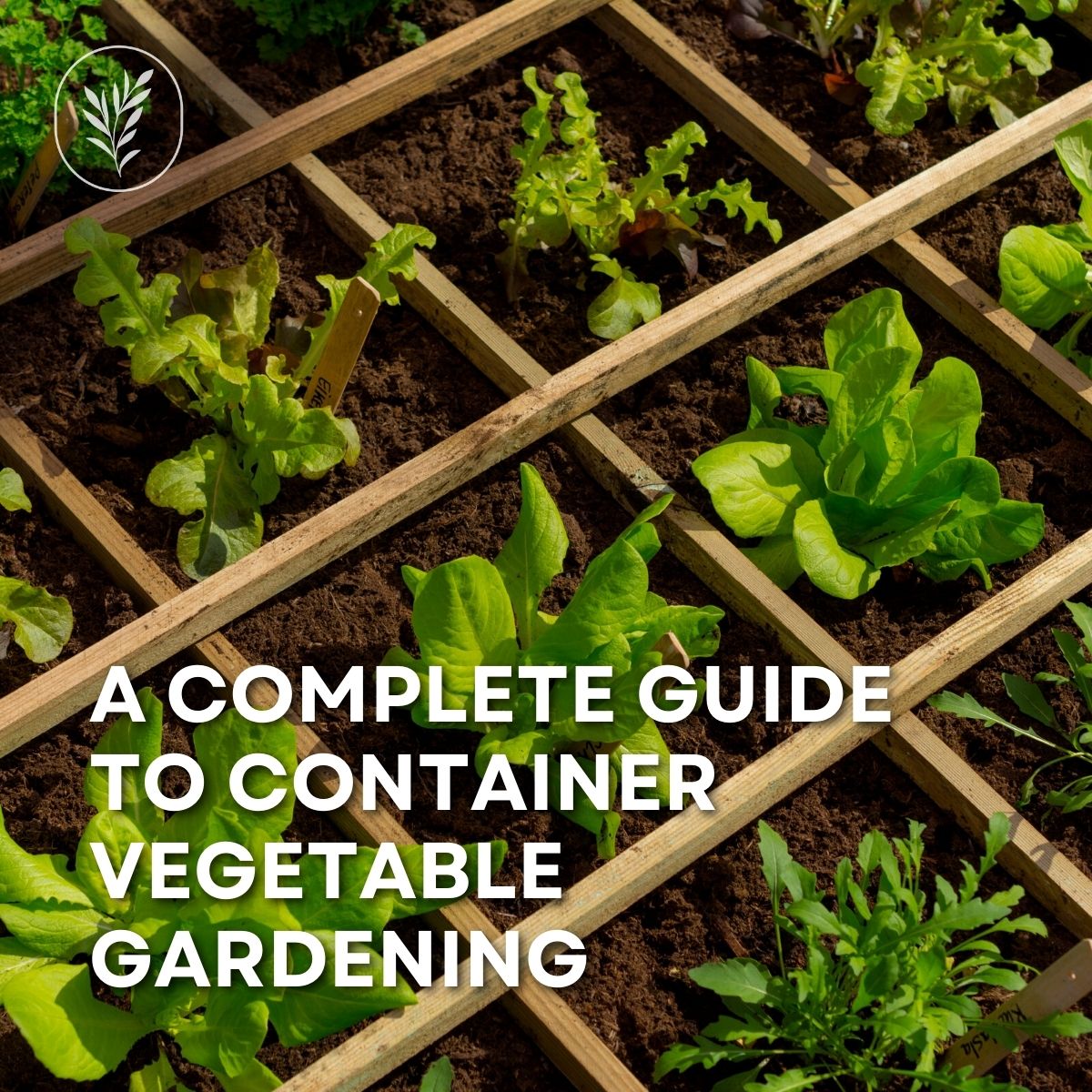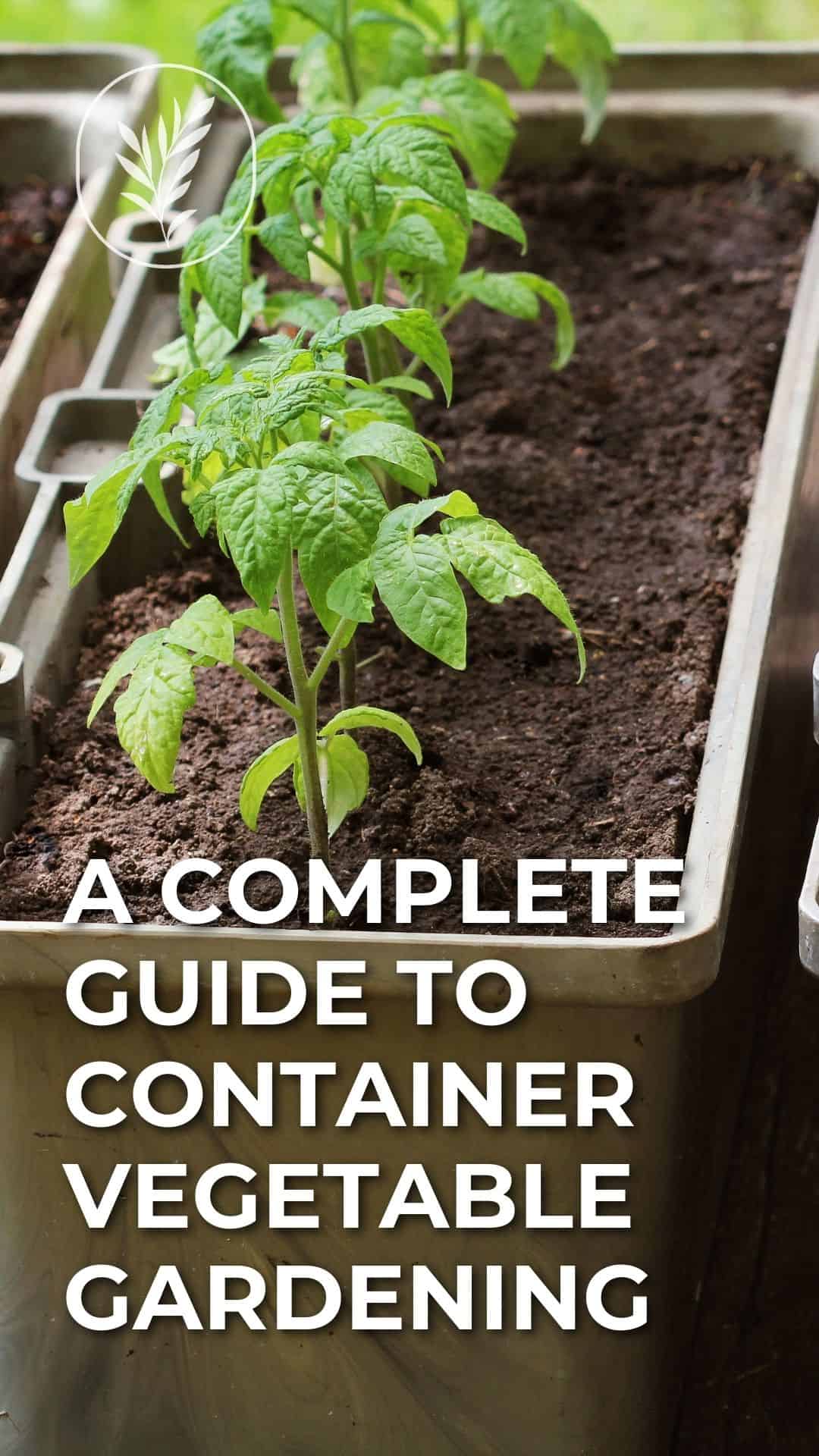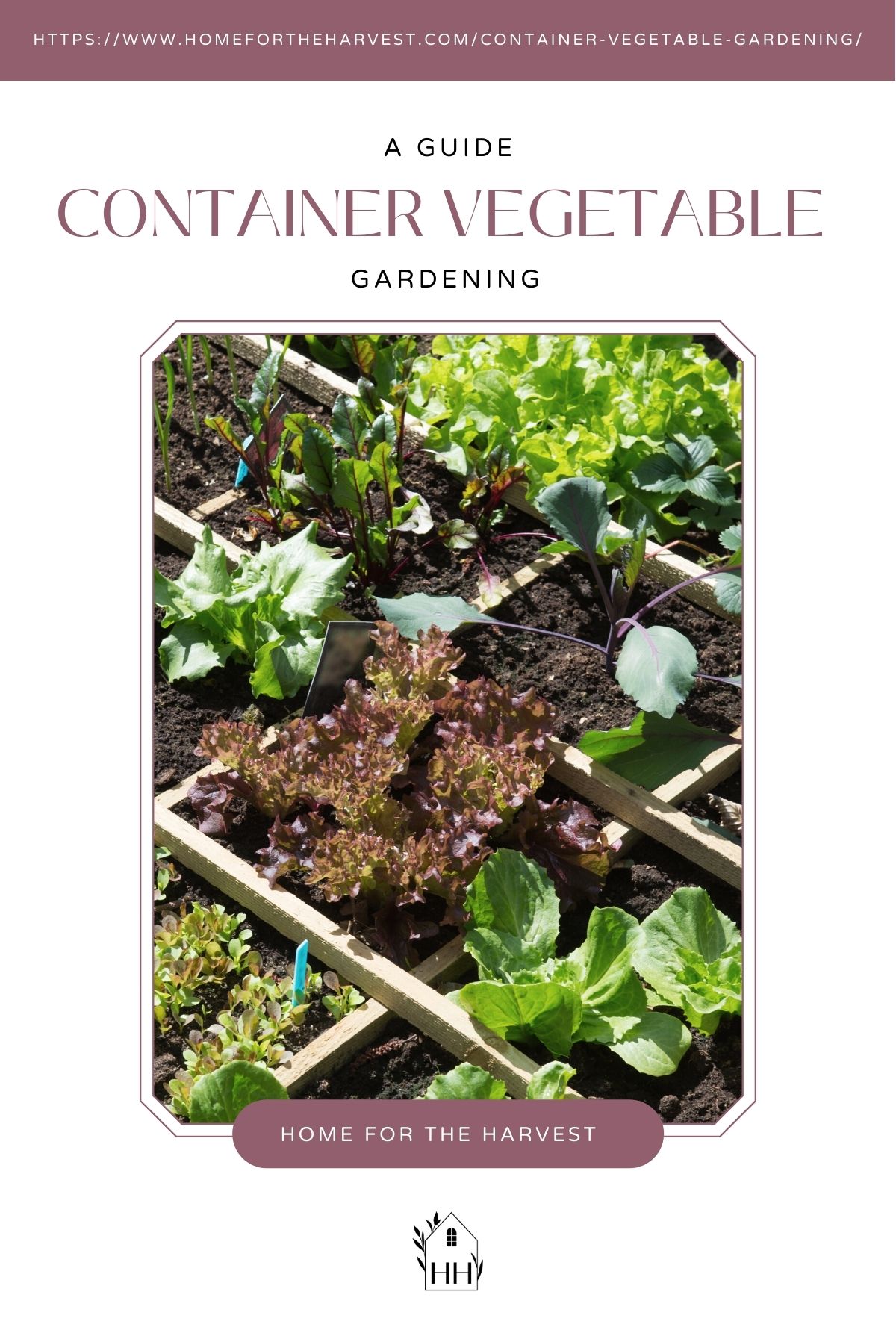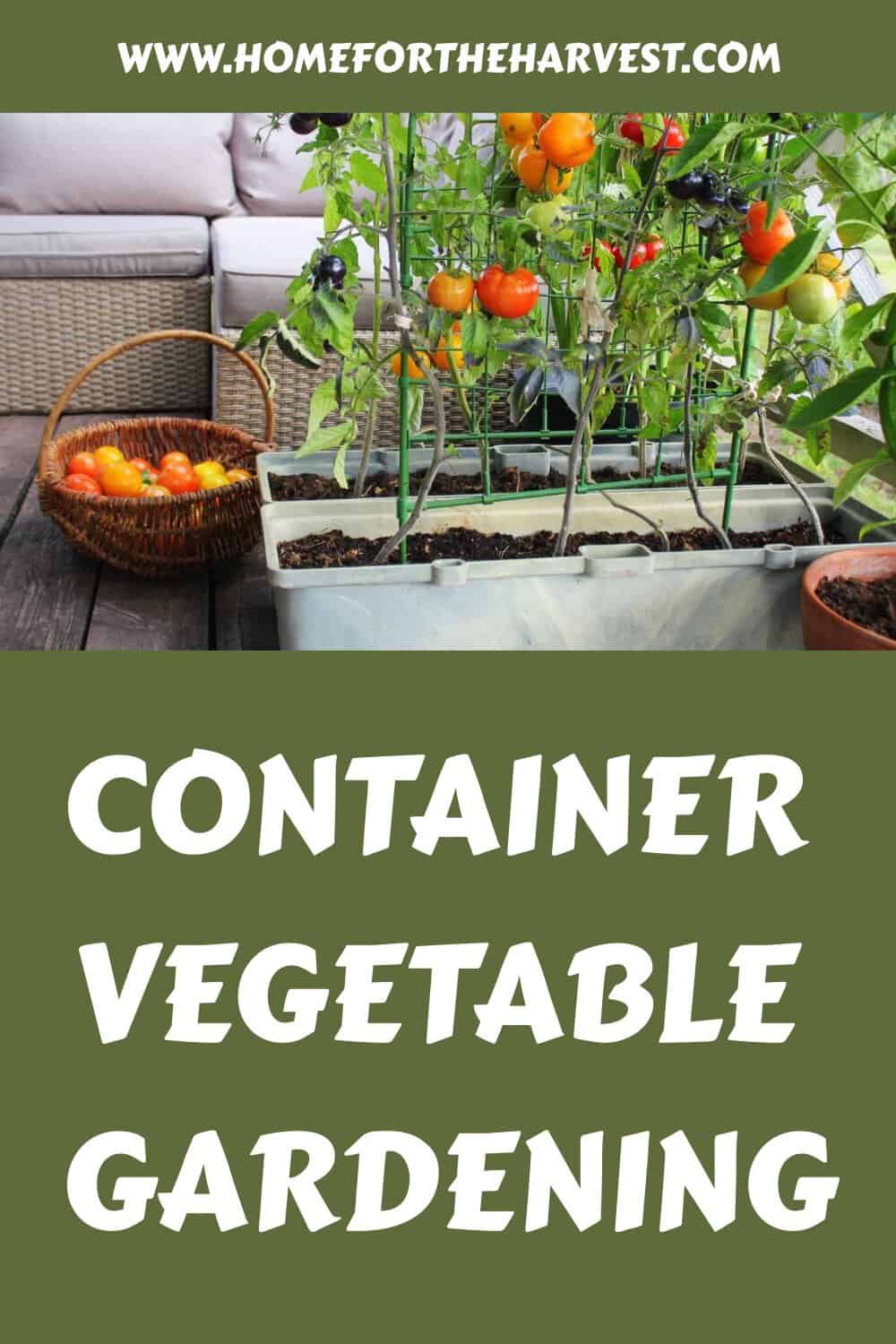Interested in container vegetable gardening? For those without a backyard to grow an entire veggie patch, there is no need to give up dreams of growing your own fresh produce. You can achieve the same result by starting a container vegetable garden.
Start with easy-to-grow vegetables that don’t require much maintenance, like leafy greens or small root veg. Make sure your chosen container matches the needs of the plant in size and materials. Use the right soil mix when planting (see below) and keep up with watering and fertilizing to maximize your harvest at the end of the season.
Read on to learn all about how to start container vegetable gardening!
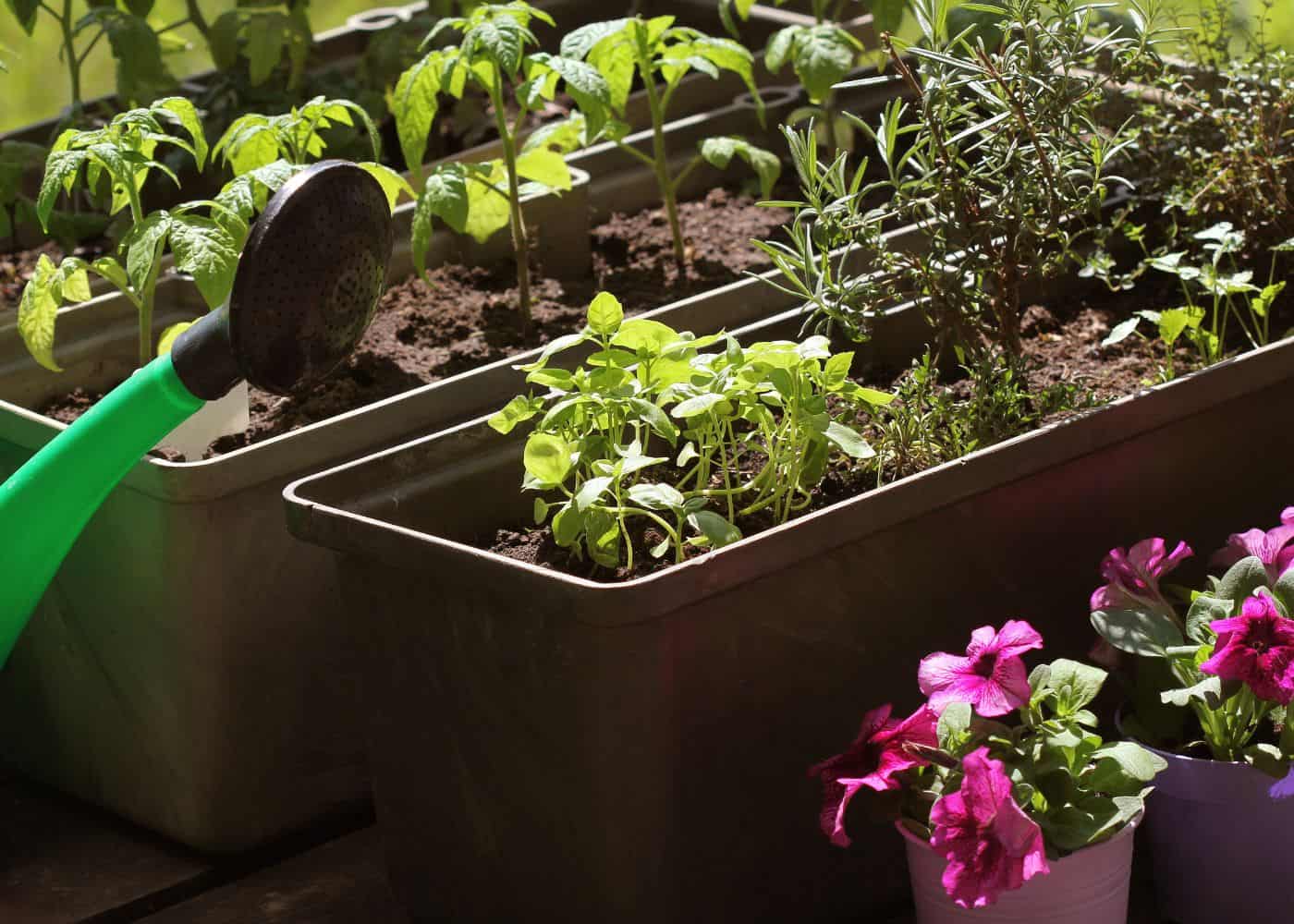
What to grow when you start container vegetable gardening
The first step in your container vegetable garden journey is deciding what to grow. With so many options, it can be tempting to choose all your favorites at once, leaving you with packets and packets of seeds or seedlings to plant. However, it’s important not to overwhelm yourself when you get started.
Pick a few plants to begin, expanding once you’ve gotten the hang of managing those. If you start off with too much, you may find it tricky to take care of all the plants successfully, greatly limiting your potential harvest.
Aim for plants that are known to grow well in containers, avoiding those that don’t. If you’re a beginner, also consider starting out with some easy-care plants before moving to the more technical ones.
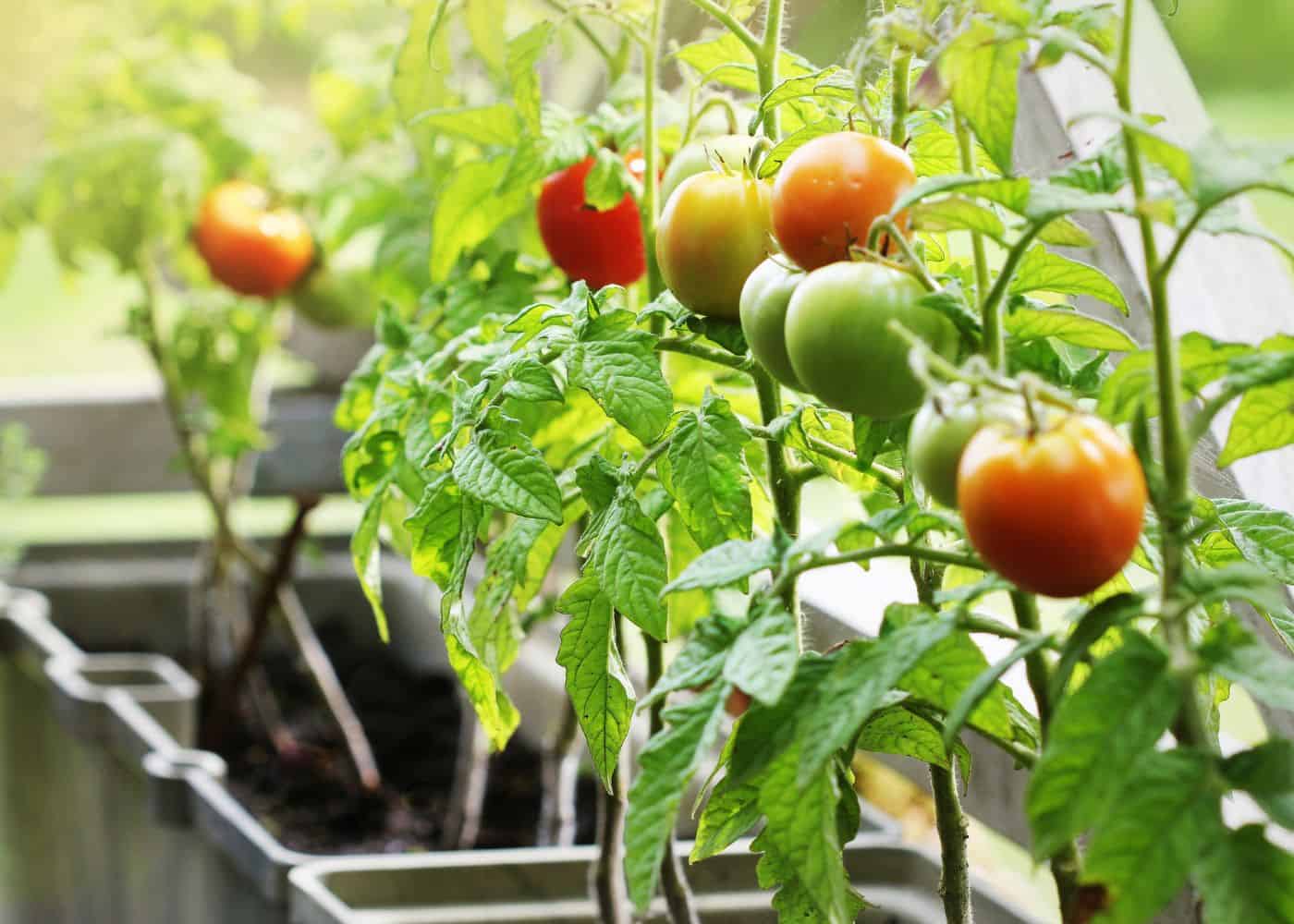
What vegetables grow best in containers?
Although almost any plant can grow in a container when given the right space and conditions, there are some that fare better than others. These are typically cultivars specially designed for growing in pots, known as dwarf or patio varieties.
Vegetables with shallow root systems are recommended unless you’re willing to spend the money on a much larger pot to accommodate tap roots. Similarly, root vegetables are typically easier left in the garden unless they are small plants.
Any of these common garden vegetables will be ideal for containers:
- Lettuce
- Chard
- Spinach
- Radish
- Beetroot
- Sweet Peppers
- Chili Peppers
- Tomatoes
- Beans
- Cucumbers
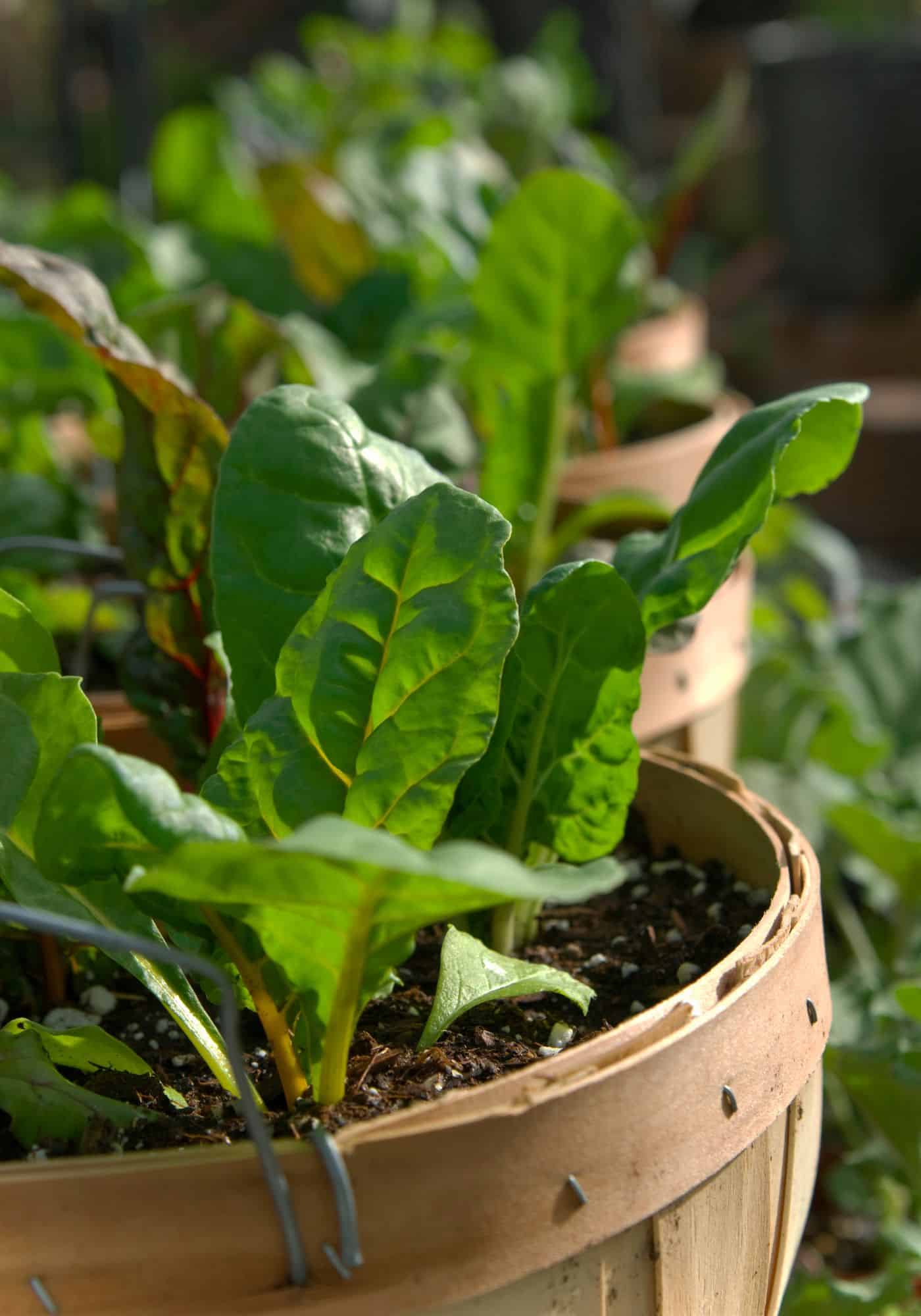
What vegetables are good for beginners?
Of these vegetables ideal for containers, there are some better suited to beginners than others. These are the low-maintenance plants that grow without fuss or extra attention.
Leafy greens are always a safe bet, whether you’re growing salad lettuce, spinach, or chard. Greens have shallow root systems ideal for container growth and don’t need much work after planting. They can be sensitive to excess sunlight though, so make sure to shade them in the afternoons and provide plenty of water.
Chilies are also easy to care for and produce massive harvests that are likely to overwhelm you. Last season I planted a couple of plants in pots that I almost forgot about, and they still produced baskets of chilies I had to dry out to preserve. As long as they get enough sun, even beginners won’t have trouble with these plants.
Although tomatoes are commonly recommended for beginners, I think they are trickier than you may assume for one annoying reason – pests and diseases. Tomatoes are prone to so many problems depending on your climate that you’re better off choosing one of the more problem-free options.
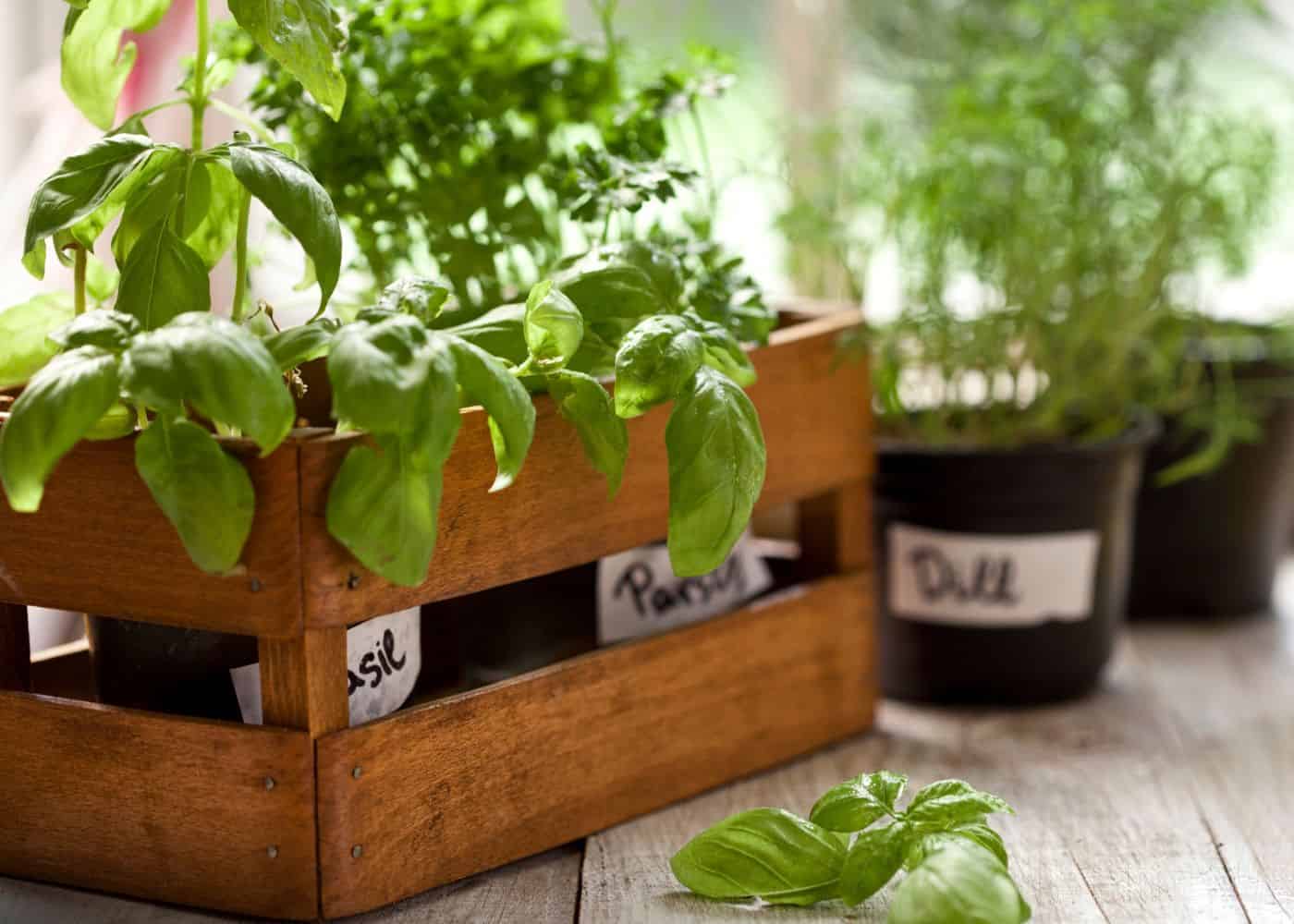
Choosing containers
Unlike regular vegetable gardening, plants are not the only choice to make. You’ll also need to search for the perfect container to suit your chosen plants, ready to take them from planting to harvest time with no hassle.
Container size
Size is the most important factor to consider in your container vegetable garden. If you plant in the wrong size pot – either in width or depth – you may stunt growth completely, ruining your harvest at the end of the season.
The size of the container should match the mature growth of the plant. These sizes are typically indicated on the seed packet of your chosen plant, giving you an idea of how much space it needs. Always opt for smaller plants for container growth as they will be much easier to manage.
Although specifics change with each variety, here is a general guide from the University of Florida on the right size container for each plant:
| Plant | Volume/Depth | Varieties |
| Chard | 1 gallon/10”-12” | Bright Lights, Red Ruby |
| Spinach | 2 gallons per 3 plants/4”-6” | Melody, Space |
| Peppers | 3 gallons/12”-18” | Sweet Banana, Thai, Habanero |
| Radishes | 2 gallons per 12 plants/6”-8” | Daikon, Cherry Belle |
| Tomatoes | 5 gallons/18”-24” | Tiny Tim, Sun Gold, Patio |
| Cucumbers | 5 gallons/12”-18” | Straight Eight, Boston Pickling |
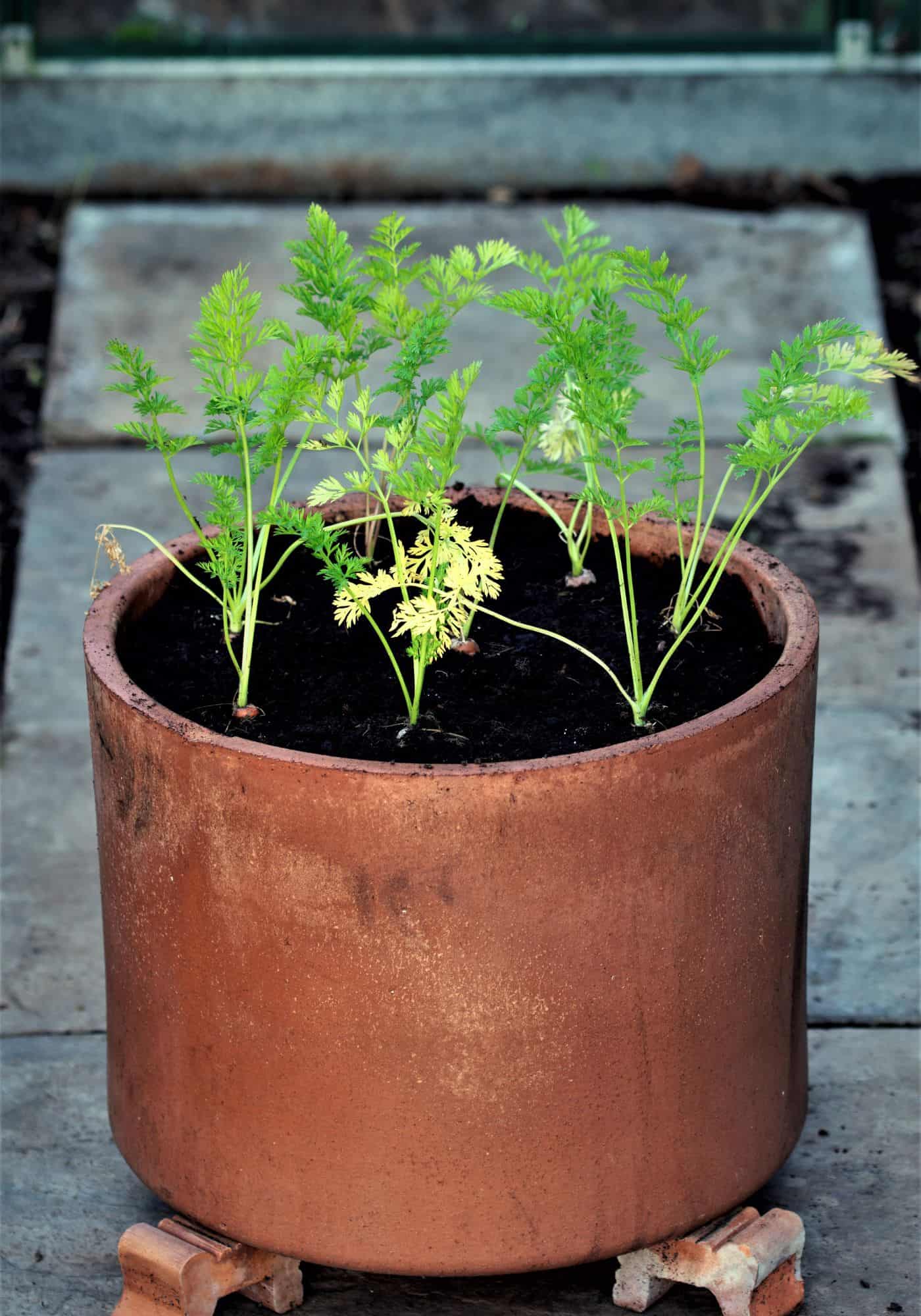
Container materials
The material of your chosen container has an impact not only on growth but also on the overall look of your garden. You’ll need to balance these needs, as well as the sizes available, to choose the right option for you.
Terra cotta is by far my favorite option. This classic material wicks moisture away from the soil, preventing waterlogging and keeping the roots happy. It also looks stunning – no wonder it was named the garden color of the year for 2023. But it is one of the priciest options and can dry out too quickly for plants in full sun all day.
For a more budget-friendly option, there is always plastic. Plastic pots are easy to find and come in an endless variety of shapes and colors. Although they can wear, they should last many years with the right care and can always be upcycled to give them a new look at the end of their lifespan. Unfortunately, plastic is not great for the environment and doesn’t look wonderful in the garden either.
For the best of both worlds, you can try fabric pots. Typically made from recycled materials, these containers drain incredibly well and can be customized to make any size you need. They also come in many colors and can be hung up or left on the ground as regular containers.
Drainage
No matter what size or material you use, make sure the container has drainage holes. Without them, water will hang around in the soil and the roots, suffocating them and leading to rot. If you’re upcycling containers, make sure you drill drainage holes before planting.
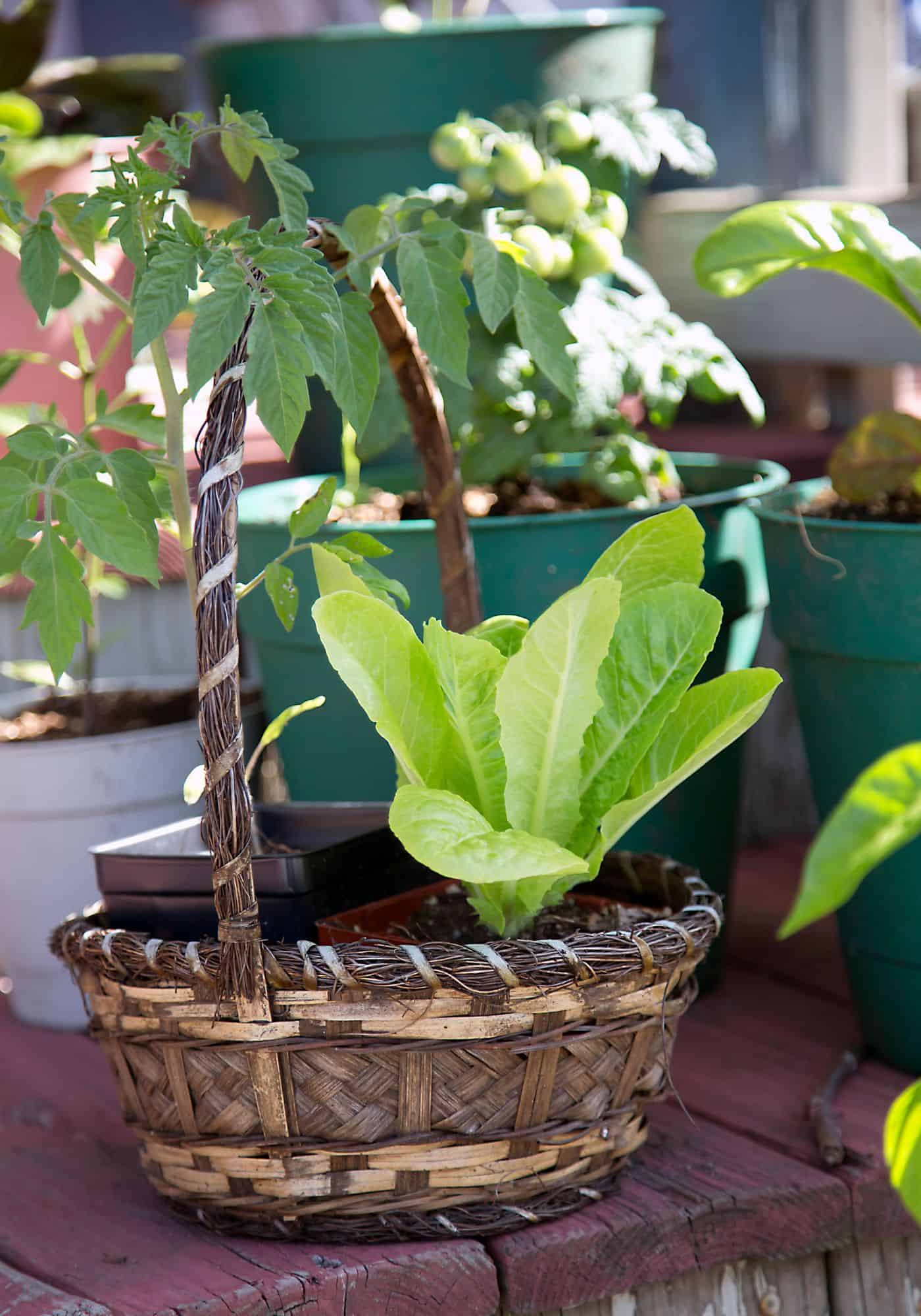
Planting
What soil is best for container vegetable gardens?
When you are ready to plant, you may think about heading into the garden to grab some soil to fill your pots. However, depending on the soil in your backyard, this could potentially lead to the early demise of your vegetables.
Regular garden soil is usually much too dense for containers that need good drainage. It can also carry weed seeds – or worse, pests and diseases – that impact growth after planting. Instead, use a lightweight potting mix amended with sand and coir to improve aeration and retain moisture.
How to sow vegetable seeds
Depending on the plant you’ve chosen, you’ll likely begin planting by sowing seeds. These can generally be sown straight into the container to establish in their final homes. Follow the instructions on the packaging for spacing tips and depth requirements.
Planting time will vary based on what you’d like to plant. For warm-season vegetables grown in cooler climates, it’s better to start your seeds indoors and transplant them into containers once the weather has warmed.
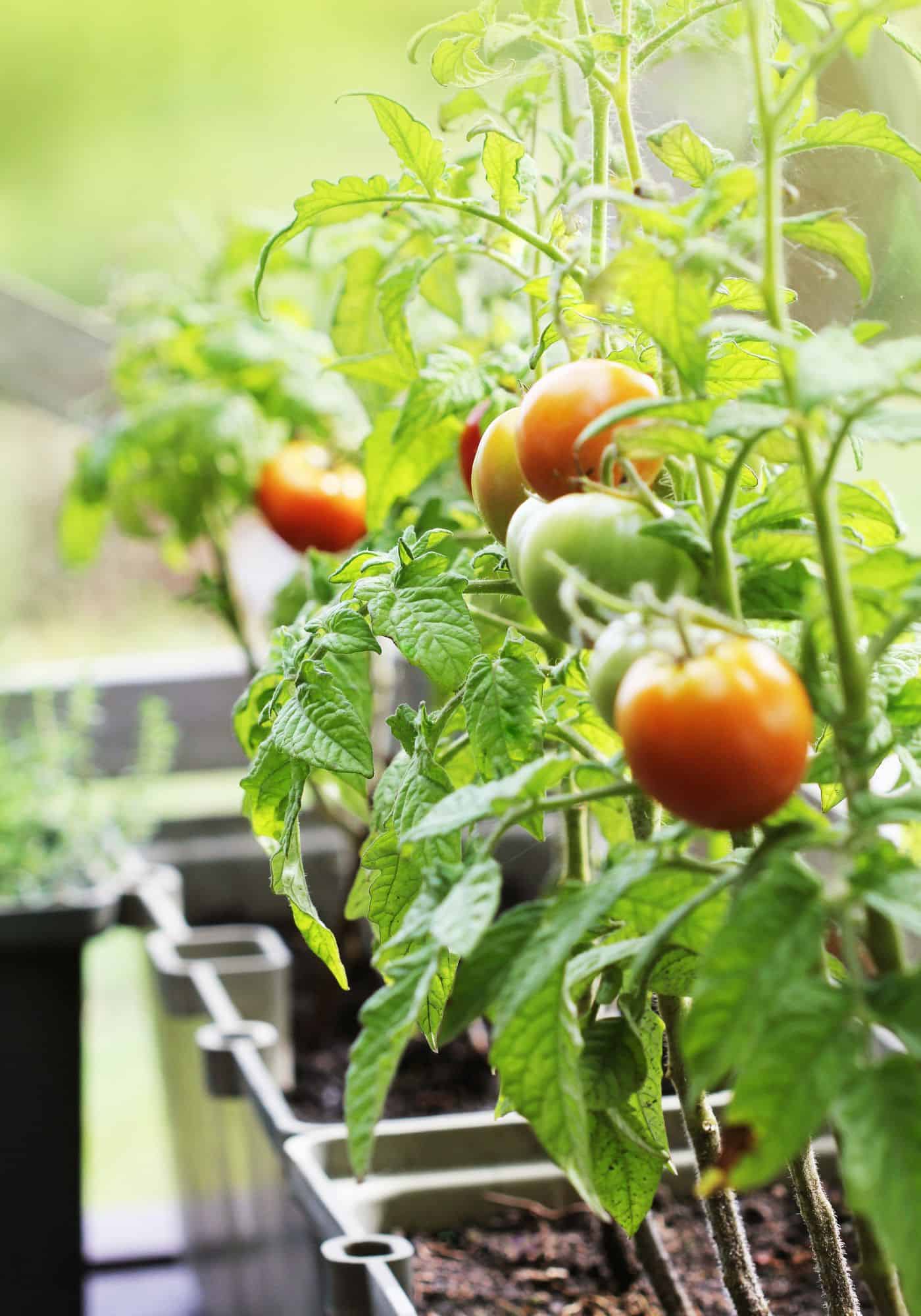
Vegetable container planting tips
As vegetable growing in pots is slightly different from planting out in the garden, follow these easy tips to get it right:
- Take the mature size of the plant into account when transplanting seedlings. They may look small now, but these veggies will quickly expand to fill up all the available space.
- You can plant seedlings slightly closer together in pots than what is recommended out in the garden. But don’t overdo it as this will restrict and stunt growth.
- If your container is too deep for your chosen plants and you don’t want to fill them with soil, place empty plastic bottles at the bottom to take up space without weighing down the pot.
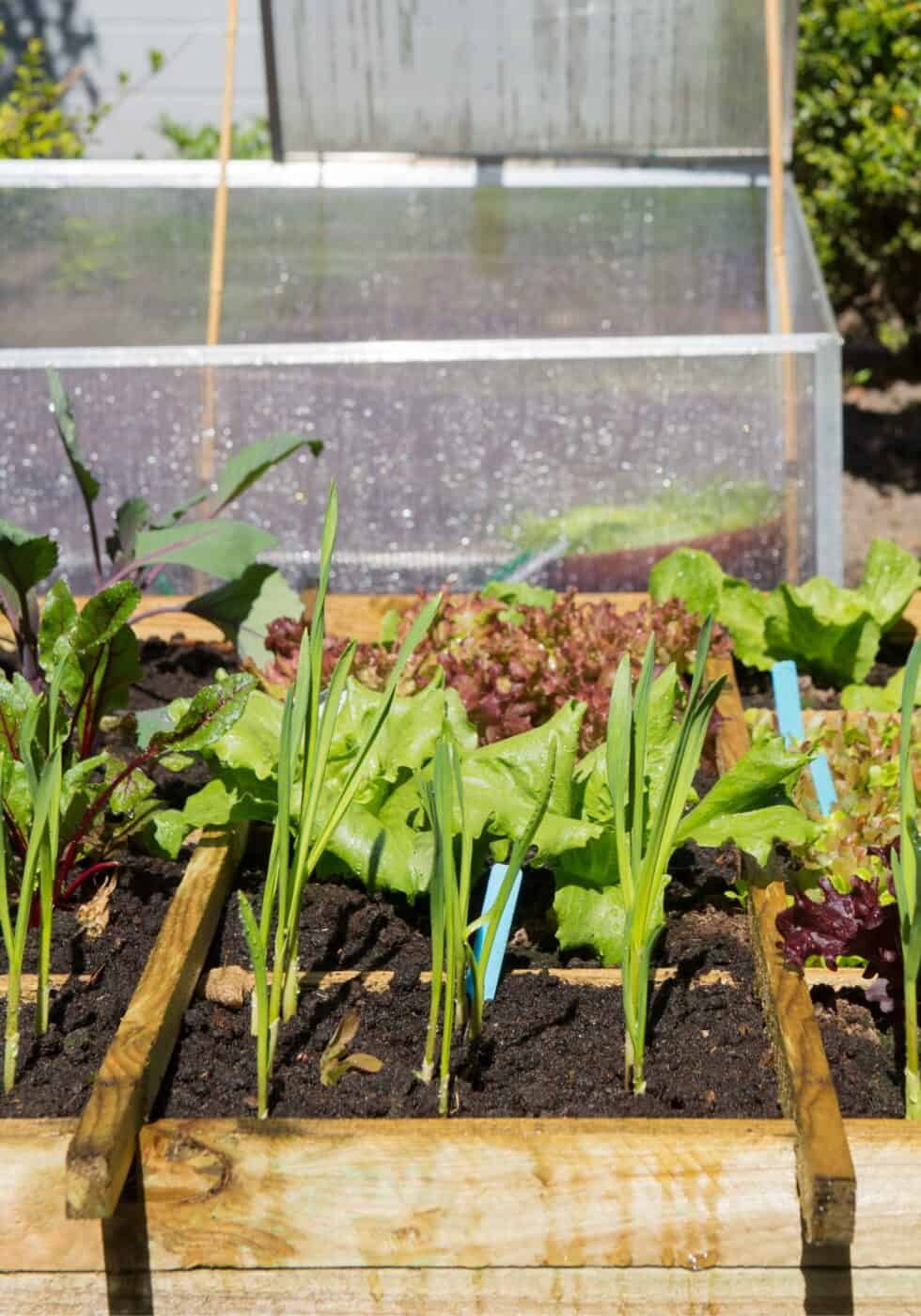
Care
Here are some basic container gardening care tips for when you’re growing vegetables.
Sunlight
Most vegetables need a minimum of six hours of direct sunlight to grow successfully. If you want a full harvest, make sure you give them their required amount of light per plant.
For gardens without the perfect position, keep your containers light enough to move in the middle of the day to make the most of the available sunlight. Also ensure they are not shaded at times by nearby structures or even other plants in the same container.
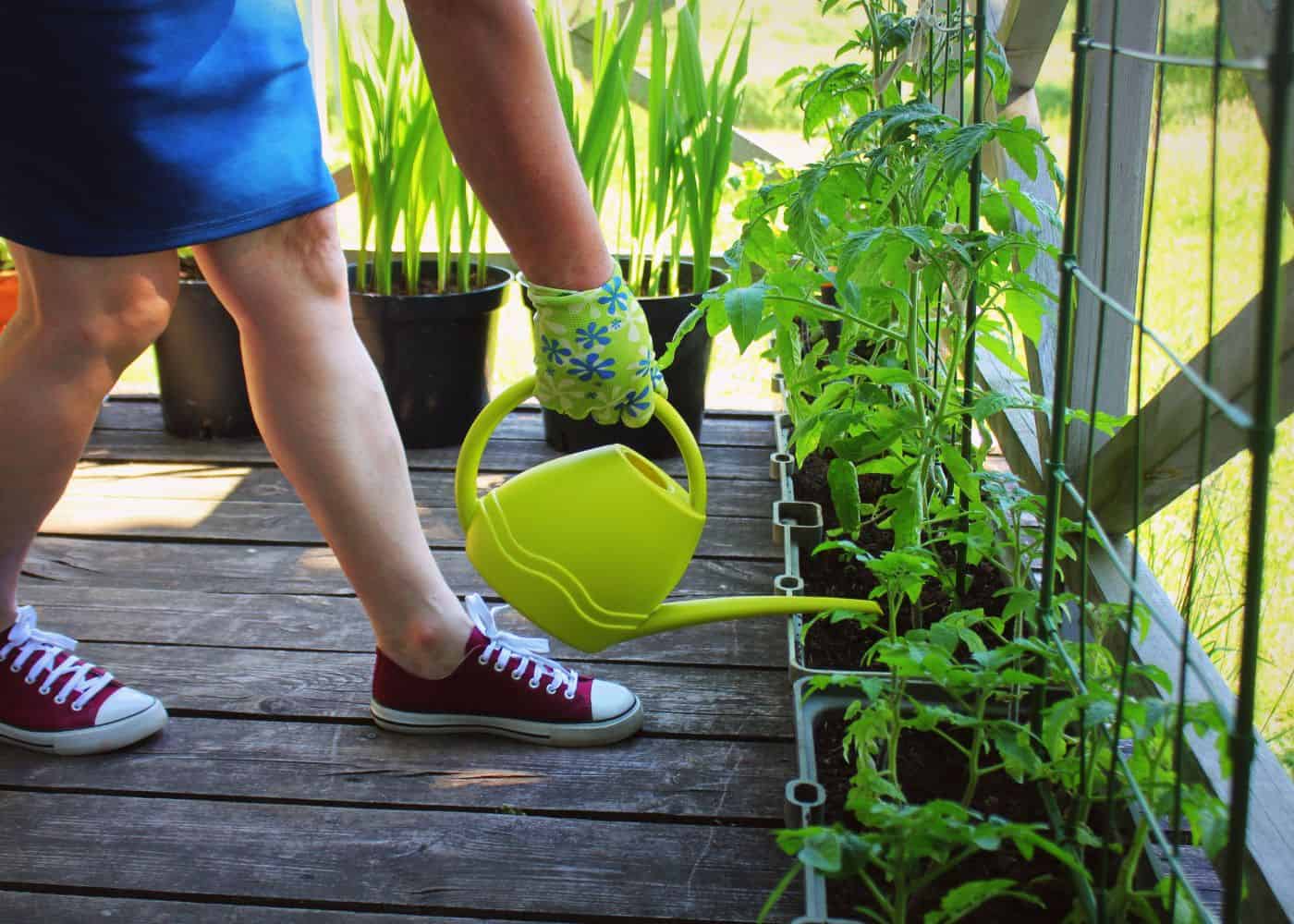
Watering
Container vegetable gardens need water far more often than regular vegetable gardens. The soil dries out quickly, especially in full sun, meaning you’ll need to water around once a day or once every two days, depending on the plant and the weather.
As containers are so demanding when it comes to water, consider installing an irrigation system. Pipes are hung from pot to pot and pinned to the soil of each container. When you’re ready, simply turn the tap on and watering will be handled.
If your container garden is on a balcony, make sure you consider drainage and your neighbors below you. If the water runs off the sides, rather use drip trays and empty them when the excess moisture has drained completely.
Maintenance
Along with the essentials of light and water, there are other care needs you should take care of in your container garden:
- Feeding: Nutrients leech from the soil quickly in containers, requiring more frequent fertilizing to keep the plants happy and primed to produce.
- Pruning: Grab your shears and trim suckers or damaged parts of the plant to manage the size and promote healthy growth.
- Cleaning: Remove any debris around the base of the plant and the containers themselves. This takes away any potential hiding places for pests and diseases, reducing your risk.
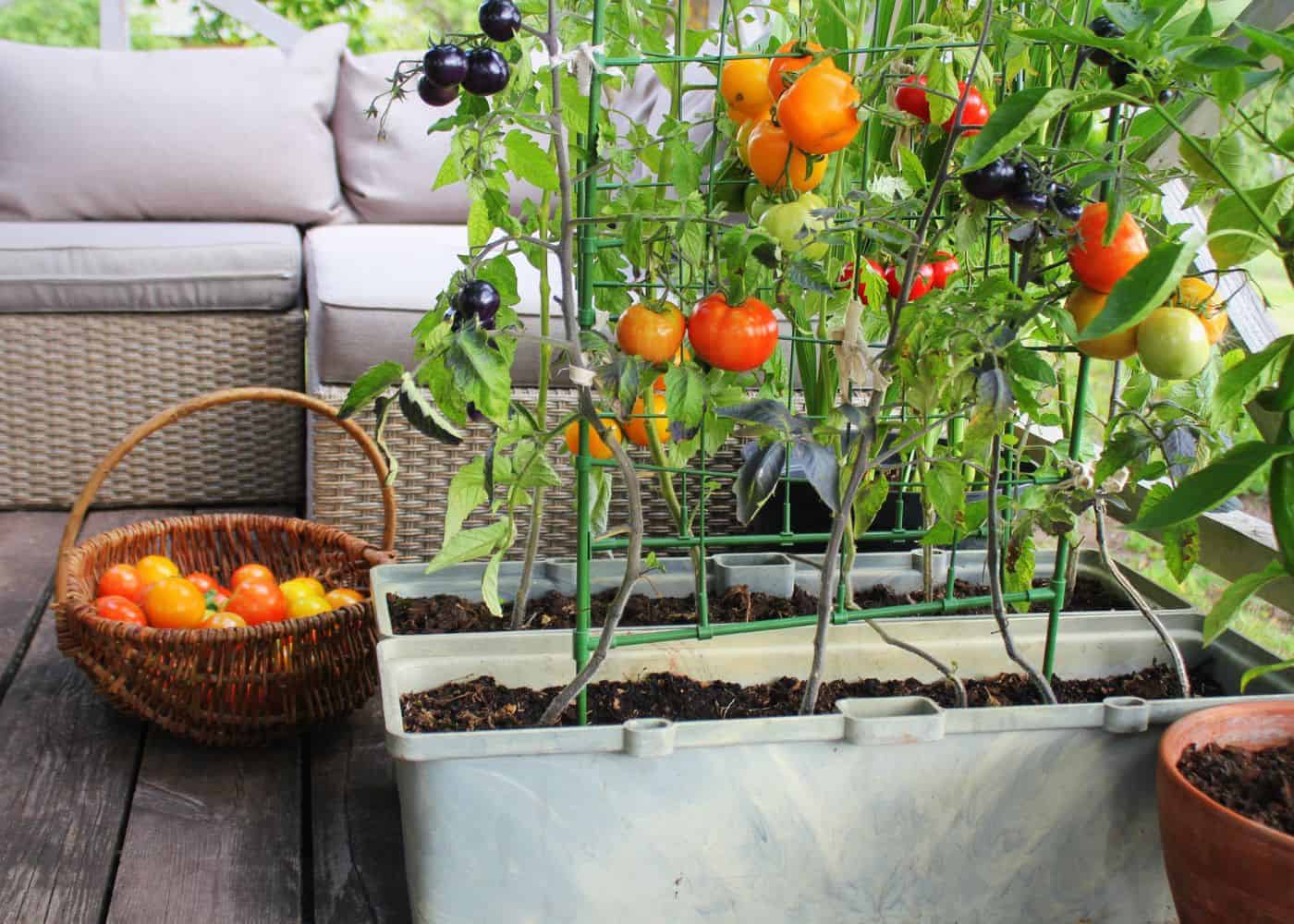
Harvesting
After a successful season, all there is left to do is harvest. For plants that continually produce leaves, never remove more than one-third of the plant at one time to prevent shock. Also, try to harvest what you will use to prevent waste.
At the end of the season, most plants will need to be discarded or thrown on the compost. Remove all the soil and scrub the pots thoroughly to save them for the next planting session.


